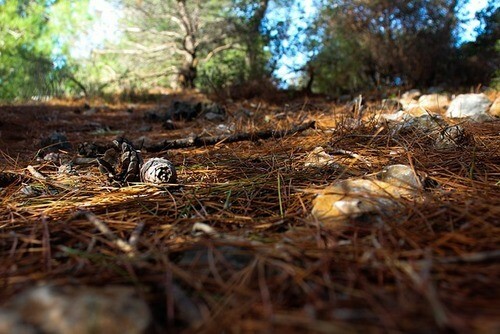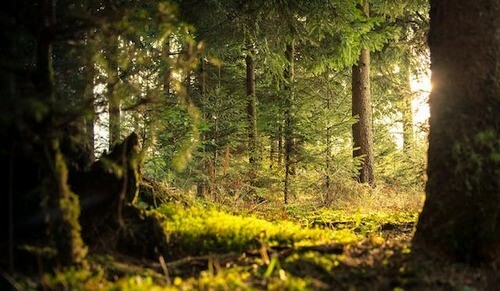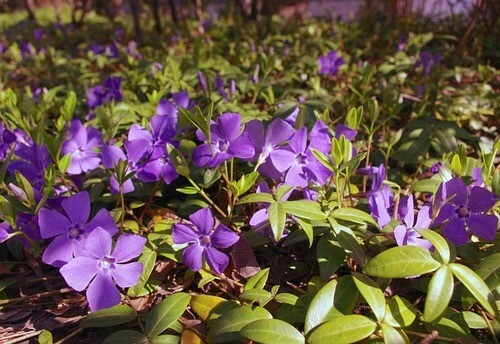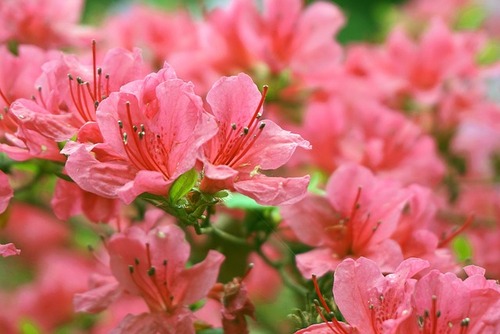How to Get Grass (And Other Plants) to Grow Under Your Evergreens
How to Cultivate Growth Under Evergreen Trees
Transforming the shaded, barren spaces under your majestic evergreen trees into lush, thriving havens is an ambitious endeavor that requires understanding the secrets hidden within these verdant giants. Evergreen trees, while stunning in their year-round greenery, present a unique challenge for cultivating grass and other plants underneath their dense canopies.
The obstacles are numerous—from the limited sunlight penetrating the dense foliage to the acidic soil and competition for water resources. Yet, within these challenges lie opportunities for transformation and growth.
In this comprehensive guide, we unravel the mysteries behind fostering life under evergreens. Discover the factors restricting growth, unlock the secrets to successful soil preparation, and explore strategic pruning techniques that optimize light penetration. We’ll delve into the world of shade-tolerant grasses, resilient ground covers, and vibrant perennials perfectly suited for these shaded environments.
Uncover how these resilient plants, with their array of colors and textures, can breathe life into the shadowy realms under your evergreens. Whether you aspire to cultivate grass or introduce a diverse range of flora, this guide offers invaluable insights to transform these once-barren spaces into thriving landscapes.
Why Does Nothing Thrive Under Evergreen Trees?

A Forest Floor Covered in Pine Needles – Photo by Ugurcanon on Pixabay
Evergreen trees are stunning additions to any landscape, yet they pose a unique challenge when attempting to cultivate grass or other plants beneath them. Understanding the reasons behind this struggle is crucial before diving into transformational methods.
Factors Limiting Growth
Multiple factors contribute to the difficulty of fostering growth under evergreens:
- Dense Foliage: Evergreens boast dense canopies that create a formidable barrier, limiting the entry of sunlight to the ground below. The thick foliage acts as a natural shade cloth, significantly reducing the amount of light reaching the plants underneath. This lack of sunlight inhibits photosynthesis, a fundamental process for plant growth.
- Acidic Soil: The soil surrounding evergreen trees tends to be highly acidic due to the decomposition of fallen needles and organic matter. This acidic environment poses challenges for many plant species, as it alters the soil’s pH levels, making it inhospitable for a wide array of flora. High acidity affects nutrient availability and disrupts the balance necessary for healthy plant growth.
- Water Competition: Evergreens are voracious consumers of moisture. Their extensive root systems aggressively absorb water from the soil, creating intense competition for this vital resource. As a result, the soil beneath evergreens often becomes dry and lacks sufficient moisture for other plants to thrive. This water scarcity further impedes the growth potential of vegetation trying to establish itself.
- Needle Blankets: The copious amounts of pine needles shed by evergreen trees accumulate and form a thick layer on the ground. This dense blanket of needles creates a physical barrier that hampers sunlight penetration and water absorption into the soil. Additionally, as these needles decompose, they contribute to the soil’s acidity, exacerbating the challenges faced by plants attempting to grow in this environment.
Because of all of these reasons, most professionals are going to recommend avoiding any planting in these areas. However, some have still had luck with it, and if you are determined to try, there are some steps you can take to make it a little easier on yourself.
Tips for Growing Grass Beneath Evergreen Trees

A Lush, Green Forest Floor – Photo by Nejc Kosir
Clearing the Ground
Begin by clearing the designated area of pine needles and debris, allowing for better soil exposure to sunlight and moisture. Regular maintenance and watering are essential during the grass-growing process.
First, you will want to clean out the area of any ground you want grass to grow on. Because of the heavy blanket of needles, it will be hard for grass to grow through them unless they are cleared out. Also, remove any additional debris to expose the soil to moisture and sunlight. As you attempt to grow the grass, make sure that you keep the area clear of needles and other debris, and keep it watered as much as possible.
Soil Preparation
Gently till the soil to a depth of five to six inches, being mindful of tree roots to prevent damage. Do this gently, preferably with your own hands rather than with any hard tools. Soil testing is critical to determine acidity levels; applying lime as necessary can help raise the pH to a more favorable range of 5.5-6.5 for optimal grass growth. Certain plant species can adapt to the challenging conditions beneath evergreen trees. For successful growth, allow the soil a year to stabilize after pH adjustments before planting.
Growing grass under evergreen trees is a fairly difficult task, and it will require you to pay a lot of attention to the area. It may take up to 2 years to have the ideal effect once you start attempting to balance the pH of the soil.
Sunlight Maximization
Prune lower tree limbs and thin out upper branches to increase sunlight penetration to the ground, promoting better conditions for grass to thrive.
Timing Pruning for Optimal Results

A Small Green Sprout Emerges from the Soil – Photo by Dragon77 on Pixabay
Pruning evergreen trees requires strategic planning that considers their growth patterns and seasonal changes, even though they don’t undergo a true dormant phase like deciduous trees.
Selecting the Right Timing
While evergreen trees don’t experience a traditional dormant season, they do have periods of slower growth or reduced metabolic activity, particularly during colder months. When pruning, aim for late winter to early spring before the onset of new growth. This period often aligns with a phase where the tree experiences slower growth rates, minimizing stress and allowing ample time for recovery from pruning wounds.
Pruning Strategies for Enhanced Light
Strategic pruning techniques play a significant role in optimizing light penetration and fostering a conducive environment for plant growth under evergreen canopies.
Opening Up the Canopy
Carefully removing lower tree limbs beneath evergreen canopies during the slower growth periods allows increased sunlight to reach the ground. This pruning method not only enhances light availability but also creates an inviting environment for plants underneath.
Thinning Upper Branches
Thinning out the upper canopy by selectively removing some thinner branches and crossing limbs promotes better air circulation and light penetration to the lower levels of the canopy and ground below. This technique allows dappled sunlight to filter through, benefiting the growth of plants below the evergreen trees.
Understanding Light Patterns and Placement

Evergreen Trees Line a Sunny Roadside
Comprehending the light patterns created by evergreen canopies is essential for strategic landscaping decisions and plant selection.
Adapting to Dappled Shade
Evergreen trees filter sunlight, creating dappled shade beneath their canopy. Select plants, such as certain ferns, hellebores, or coral bells ( Heuchera ), that thrive in partial shade to make the most of these light conditions. We’ll have more varieties in the following sections.
Utilizing Areas of Direct Sunlight
Identify spots where direct sunlight reaches the ground under evergreen trees. These areas are ideal for planting sun-loving species or introducing small flowering plants that benefit from brighter light conditions.
Shade-Tolerant Grasses and Ground Covers

Purple Flowers Used as Ground Cover – Photo by May_Hokkaido on Pixabay
While Traditional Grasses Might Struggle, Several Shade-Tolerant Options Thrive Beneath Evergreens:
Fine Fescues
- Ideal Conditions: Shade to partial shade; well-draining soil
- Height: Varies (typically between 6-18 inches)
- Spread: Varies (spreading habit)
- Blooms: Non-flowering; known for fine, narrow leaves
Ajuga
- Ideal Conditions: Partial to full shade; moist, well-draining soil
- Height: 4-6 inches
- Spread: Spreads rapidly, forming dense mats
- Blooms: Spring; small, blue, or purple flowers on short spikes
Vinca Minor (Periwinkle)
- Ideal Conditions: Partial to full shade; well-draining soil
- Height: 3-6 inches
- Spread: Spreads vigorously, forming dense ground cover
- Blooms: Spring to early summer; blue or purple flowers
Lamium (Dead Nettle)
- Ideal Conditions: Shade to partial shade; well-draining soil
- Height: 6-12 inches
- Spread: Spreading habit; forms mats
- Blooms: Spring to summer; various colors like pink, purple, or white
Recommended Plant Varieties

A Plethora of Pink Azalea Flowers – Photo by Nowaja on Pixabay
Consider Planting Resilient Options Such As:
Shade-Tolerant Ground Covers:
- Ferns (Various Species): Maidenhair ferns ( Adiantum spp. ), sword ferns ( Polystichum spp. ), and deer ferns ( Blechnum spp. ) are adaptable to shaded conditions and add lush greenery.
- Wild Ginger ( Asarum caudatum ): Low-growing and evergreen with heart-shaped leaves; perfect for shaded areas.
- Bishop’s Hat ( Epimedium spp. ): Dainty, heart-shaped leaves and delicate flowers; tolerant of dry shade conditions.
Colorful Perennials:
- Bleeding Heart ( Dicentra spp. ): Known for its heart-shaped pink or white flowers on arching stems; ideal for shady spots.
- Coral Bells ( Heuchera spp. ): Various cultivars offer colorful foliage and small flowers in shades of red, purple, green, or silver.
- Lungwort ( Pulmonaria spp. ): Variegated leaves and clusters of pink, blue, or white flowers; thrives in shaded environments.
Seasonal Bloomers:
- Azaleas ( Rhododendron spp. ): Vibrant blooms in a range of colors; well suited to acidic soil under evergreens.
- Camellias ( Camellia spp. ): Evergreen shrubs with showy flowers in various hues, thriving in partial shade.
- Japanese Anemone ( Anemone hupehensis ): Graceful and charming flowers in shades of pink or white add elegance to shaded areas.
Foliage-Focused Plants:
- Japanese Forest Grass ( Hakonechloa macra ): Graceful, cascading foliage that adds texture and interest to shaded landscapes.
- Japanese Painted Fern ( Athyrium niponicum ): Silver and burgundy fronds; perfect for adding color contrast.
- Bergenia ( Bergenia cordifolia ): Robust evergreen foliage with pink or white blooms; well-adapted to shaded conditions.
These plants are well suited for the San Francisco Bay area’s climate and the specific conditions found under evergreen tree canopies, offering a variety of colors, textures, and seasonal interest. When planting, consider the unique microclimate of your garden and the specific requirements of each plant species for optimal growth. If you are uncertain of what you should plant, or if you have concerns about your evergreen trees, Arborist Now is here to guide you.
Conclusion

The Tip of an Evergreen Branch – Photo by Kranich17 on Pixabay
As you embark on the journey to revitalize the shaded oasis beneath your evergreen trees, remember that transformation takes time and patience. Each step—from clearing debris to strategic pruning and selecting the right plants—contributes to the gradual emergence of life within these once-barren spaces.
By understanding the nuances of evergreen canopies, the challenges they pose, and the opportunities they offer, you’ve unlocked the gateway to a vibrant, thriving landscape. The carefully curated selection of shade-tolerant grasses, resilient ground covers, and colorful perennials, tailored for your specific microclimate, holds the promise of transforming these shaded realms into dynamic, living canvases.
Embrace the process, experiment with plant varieties, and adapt techniques to suit your garden’s unique needs. Whether you opt for a carpet of resilient grass or a diverse tapestry of flora, your efforts will gradually unveil a breathtaking transformation.
As you envision the verdant haven beneath your evergreens, remember that with dedication and a touch of horticultural finesse, you’re not just cultivating greenery; you’re fostering a sanctuary teeming with life and beauty—a testament to your nurturing touch within the embrace of these majestic trees.
Originally posted on January 10, 2019
We may receive affiliate compensation for some of the links below at no cost to you if you decide to make a purchase.



